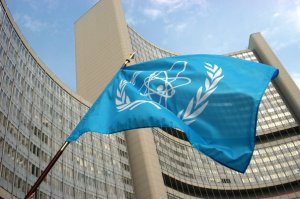By Tom Z. Collina and Kelsey Davenport
According to the International Atomic Energy Agency's (IAEA) February 2013 quarterly report on Iran's nuclear program, Tehran is continuing to develop its nuclear program and slowly enhancing its nuclear weapons breakout potential. While this progress is troubling, Iran still remains years away from having a workable nuclear arsenal.
 IAEA headquarters in Vienna, Austria
IAEA headquarters in Vienna, Austria
The IAEA's February 2013 report (PDF), which was leaked to reporters today, indicates that Iran has begun installing, for the first time, advanced second-generation centrifuges in the Fuel Enrichment Plant of the Natanz facility, which produces uranium enriched to reactor grade, or 3.5 percent.
According to the previous report, issued in November 2012, the second-generation centrifuges, or IR-2Ms, were only installed in the research and development area at Natanz, referred to as the Pilot Fuel Enrichment Plant. When operating, the IR-2Ms could significantly increase Iran's enrichment capabilities.
Iran's stockpile of uranium enriched to 20 percent has also increased since the November IAEA report. According to the new February 2013 report, Iran has produced 280 kg of uranium enriched to 20 percent (an addition of 47 kg). Of that amount, about 111 kg has been fed into the conversion process at Esfahan, which converts the uranium hexafluoride gas to uranium oxide, a solid form suitable for fabricating fuel plates to produce medical isotopes at the Tehran Research Reactor (TRR). This leaves 167 kg of uranium enriched to 20 percent in Iran's available stockpile, an increase of 32 kg from the November 2012 report. The November 2012 report noted that the total production of uranium enriched to 20 percent was 232 kg, of which 96 kg were slated for conversion to uranium oxide powder.
Despite this increase of available 20 percent enriched uranium, Iran remains short of the amount needed for one bomb, if enriched further to weapons-grade (90 percent enriched U-235). Iran would need approximately 250 kg of 20% material available in gaseous form to reach that point.
At Fordow, Iran's second uranium enrichment facility, as of February 17 the total number of installed centrifuges dropped by 74 to 2,710. Of these, only 696 were operating, the same number as in November. Fordow produces uranium enriched to 20 percent.
The February IAEA report reiterates the Agency's inability to reach agreement with Tehran on a "structured approach" to resolving outstanding questions regarding potential military dimensions to Iran's program that were cited in the Agency's Nov. 2011 report. In particular, the report states that Iran's activities at the suspect Parchin site "will have seriously undermined the Agency's ability to undertake effective verification."
The new report also notes that Iran continues with construction of a heavy water reactor at Arak, which Iran plans to complete in early 2014. The report also states that, on November 26, 2012, the Agency verified a prototype IR-40 natural uranium fuel assembly for Arak before its transfer to the Tehran Research Reactor (TRR) for "irradiation testing." This would be the first time TRR has been used to test fuel for the Arak reactor. Spent fuel produced by heavy water reactors can be reprocessed to extract plutonium, which can be used to produce nuclear weapons.
Taken together, the IAEA report findings provide further troubling evidence that Iran is continuing to pursue sensitive nuclear fuel-cycle activities in violation of UN Security Council resolutions and is slowly enhancing its nuclear weapons breakout potential. However, Iran remains years, not months away from having a workable nuclear arsenal if it chooses to pursue that capability.
Given this reality, it is clear that new and more energetic diplomatic efforts are necessary to overcome the impasse and resolve the nuclear standoff. A number of practical options for an agreement that would curtail the most proliferation-sensitive Iranian nuclear activities in exchange for limited sanctions relief are in circulation.
But to begin to achieve real progress, it is essential that the P5+1 group (China, France, Germany, the United Kingdom, and the United States) and Iran approach their next round of talks--due to begin in Almaty, Kazakhstan on Feb. 26--with greater flexibility, creativity, and seriousness.
